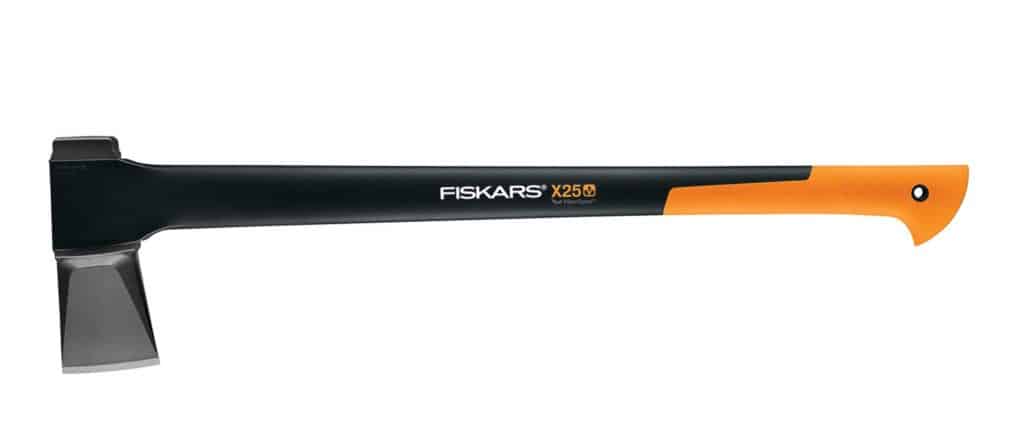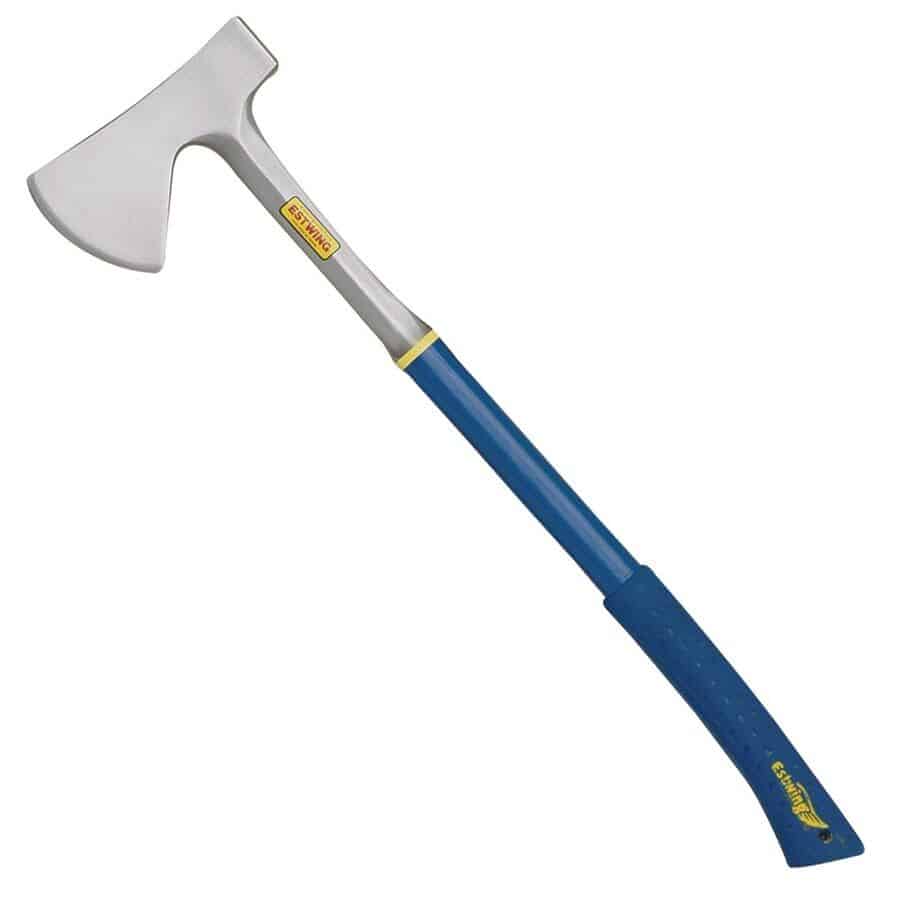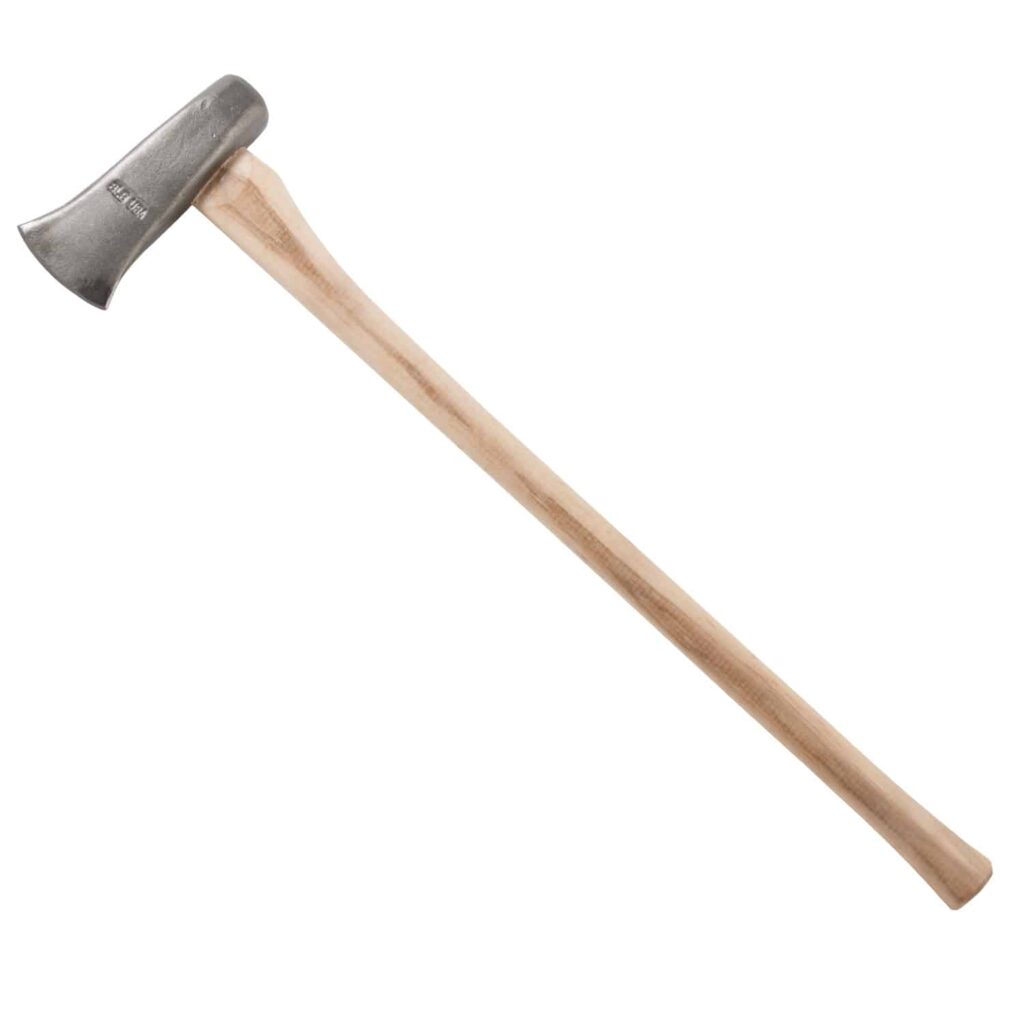The main difference between a splitting axe and a splitting maul is that an axe is lighter, has a sharp cutting edge, and a shorter handle. A maul has a blunt, hammer-like edge that is used to force cut wood open or used with a wedge.
Few manual cutting tools are as efficient as the splitting axe and maul. Although we have many types of machinery to serve the same purpose, the popularity of manual cutting tools isn’t likely to fade away anytime soon.
Splitting axe and maul are the two most common wood cutting tools specialized for splitting wood more appropriately than any other type of axes. Despite serving the same purpose, the tools have their fair share of differences.
To ensure you can pick up the right tool, we will discuss splitting axe vs splitting maul differences based on the features, types, and uses. So, without wasting any time, let’s dive right in.
Table of Contents
Comparison: Splitting Axe vs Splitting Maul
Before jumping into the details, here’s a quick comparison between the tools:
| Features | Splitting Axe | Splitting Maul |
| Weight | Lightweight, 3 to 6 pounds | Heavy, 6 to 8 pounds |
| Head Design | Sharp, features a tapered cutting edge, a blade, and an eye portion | Fat, blunt, hammer-like wedge or semi-wedge shaped |
| Handle Structure | Short, no longer than an arm’s length, wood or composite handles | Very long, made from fiberglass, metal, wood, or plastic |
| Usage | Multi-purpose, used for chopping, splitting, shaping, etc | Only suitable for splitting wood with precision |
What Is a Splitting Axe?
A splitting axe features a long wooden handle and a narrow, tapered head that break apart the wood fibers instead of cutting the wood grains.
The head is made heavy so that the pressure can concentrate on the blades and strike the wood harder and penetrate deeper.
You can find splitting axes from hundreds of brands in different sizes and materials in the marketplace. Iron, steel, and copper are the most common material used to make the blades of splitting axes.
There are dozens of premium splitting axes manufactured today, so I have tested them all to come up with the best options:
- Shocked Reduction Composite Handle
- Low Friction Coating
- Single Piece, Full-Tang Design
- Affordable Price Tag
Fiskars X27 Super Splitting Axe
- Powerful 5.8 Pound Splitting Axe
- 36-inch Non-Slip Composite Handle
- Advanced Bevel and Convex Design to Split Wood More Easily
- Lifetime Warranty
- Portable 26-inch Steel Core Handle
- Shock Reduction Grip
- Heavy Duty Sheath
- Made in USA
What Is a Splitting Maul?
As the name suggests, this tool is also used to split the wood fibers. A splitting maul has a long wooden handle and a very heavy wedge-shaped head used for cutting and hammering. Mauls are more suitable for splitting relatively large and thick wood logs.
The head of a maul is longer and less tapered than any other cutting tool. Although most common blades are wedge-shaped, semi-wedge and conical blades are also becoming popular nowadays. Mauls are sometimes called sledgehammers because of the blunt hammer-like poll side.
I have written a comprehensive guide to the best splitting mauls on the market. Here are my top 3 picks:
- 8 Pound Total Weight
- 36 inch Shock Absorbing Composite Handle
- Optimized Bit Profile to Split Wood Fibers Apart
- Rust-Resistant Heat Treated Steel Axehead
Husqvarna Wooden Splitting Maul
- 32-inch Hickory Wooden Handle
- Hardened Poll for Hammering in Splitting Wedges
- Protected Neck to Avoid Damage
- Includes a Leather Edge Cover
1844 Helko Werk Splitting Maul
- Hand Forged in Germany
- C50 High Carbon Steel with 53-56 HRC Hardness
- 36-inch Grade A American Hickory Handle with Linseed Oil Finish
- Powerful 9 Pound Total Weight
Differences between Splitting Axe and Splitting Maul
As both the tools have striking similarities in their appearance, many people use the terms axe and maul interchangeably. No matter the popular opinion, the tools differ in their features and functions.
Below we have rounded up the most notable dissimilarities between the splitting and maul so you can identify the tools within seconds. Let’s have a look.
Weight
If you’re in a hardware store trying to figure out which axe-like tool is a maul, pick the tool and measure the weight. A maul is far heavier than any axe.
The big metal-made hammerhead adds to the overall weight of a maul. Generally, a splitting maul weighs from 6 pounds to 8 pounds.
As for the splitting axe, the weight usually varies from 3 pounds to 6 pounds. Because of the lightweight, most people prefer splitting axes for cutting regular firewood for camping or burning in a fireplace.
Head Design
The head design is another key feature to differentiate between the two tools. Splitting axes have a sharper and less heavy head compared to a maul. Usually, the head of a splitting axe is divided into 3 parts: cutting edge or bit, blade, and eye.
A tapered cutting edge pierces straight into the wood while the blade digs deeper into the fibers. Then we have the eye portion that connects the head to the handle and prevents the axe from popping out.
On the opposite side of the blade, the splitting axe is completely flat, which means you can’t use the head for hammering tasks. Most axe heads are made from steel, iron, or copper and feature a stainless steel coating to prevent rust.
On the other hand, mauls can be identified by their long, fat, and blunt heads. You can instantly recognize the maul head from the wedge-like shape and a very short cutting edge. The blade and the poll side have more of a hammer shape to drive a nail inside the wood.
For improved strength, the maul head is made from heavy-duty iron. This blunt head strikes the wood with excessive force that breaks the wood apart parallel to the wood grains. Splitting maul heads has twice as much weight as the splitting axe heads.
The Handle
If you can’t spot the tools from their weight and head design, check out the handle size. Splitting mauls have longer handles to balance the weight of the head and the shaft. The handle also helps to detach the blade from a wood log easily.
As the long handle is further away from your lower body, chances of injury are reduced. Typically, the maul handles are made from fiberglass, plastic, or metal to provide sufficient support to the heavy head.
On the contrary, splitting axe handles are mostly made from wood or composite materials. Composite handles are generally more long-lasting and lightweight than wooden and metal handles.
Axe handles are a few inches shorter than splitting mauls. Try to compare the tool with your arm’s length. If the tool is the same length as your arm, that’s surely an axe, not a maul.
Usage
Because of its lightness, the splitting axe is frequently used for splitting wood. The small handle and compact head make it easier to strike the wood with less force so you don’t have to face frequent hand fatigue.
Some splitting axes have slightly curved, oval-shaped handles so you can have a strong and safe grip over the handle. You can also use the splitting axes to perform many chores other than cutting wood.
Mauls are extremely helpful to split the heaviest and thickest wood manually. The extra weight makes it easier to dig deep into the wood. One strike of the splitting maul for some softwood is enough to tear it into two pieces.
However, the heaviness causes muscle fatigue, and you might become exhausted after a while. Also, you have to put extra force to split the wood properly. That’s why mauls are mainly used for handling the heaviest wood.
Conclusion
Now you know the splitting axe vs maul differences as per their most obvious features. We understand the temptation to buy any axe-like tool for splitting firewood, but those tools might eventually leave you completely frustrated as only the splitting tools can do the job right.
Opt for a splitting axe if you want to split wood regularly with the least effort. Otherwise, pick the heavy and blunt splitting maul for neatly splitting even the hardest log woods.








